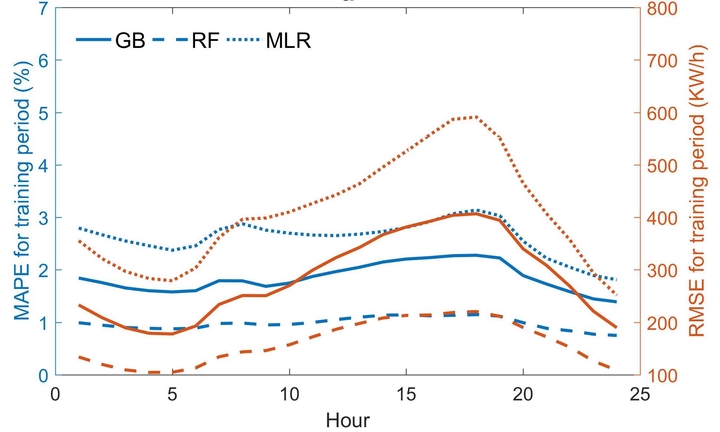Applied Climatology

Short-term load forecasts are important tools for electrical utilities to balance electricity supply and demand. The exponential increase in behind-the-meter solar panel installation in California has made it more difficult to accurately predict electrical load. This study developed three forecast models based on multiple linear regression, random forest, and gradient boosting that incorporated solar capacity to predict hourly load in southern California 24-h in advance. Air temperature was the most important meteorological variable and holiday, month, solar capacity and the load from the previous week were the most important non-meteorological variables. All three models were more accurate when load was lower, such as early morning, late at night and during the winter. In contrast, all models had larger errors during the middle of the day and in summer when load was higher. The mean error, based on the forecasts for each hour of the day, was 3.5% for the random forest, 3.4% for the multiple linear regression, and 3.1% for the gradient boosting. Overall, the gradient boosting model performed the best and had errors <2% during the early morning and late evening. This study provides insights on short-term load forecasting in locations with a significant increase in solar generation.